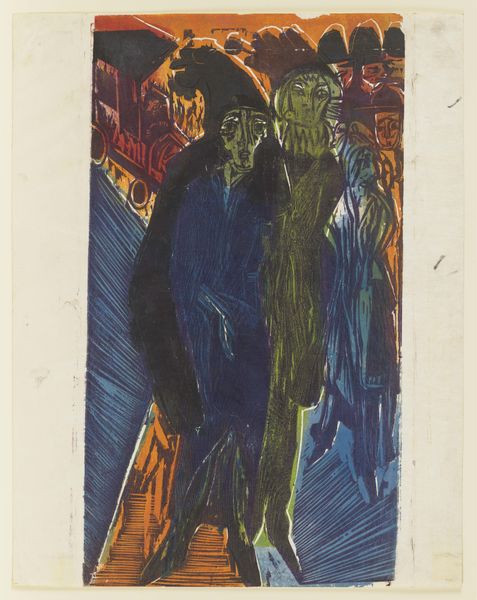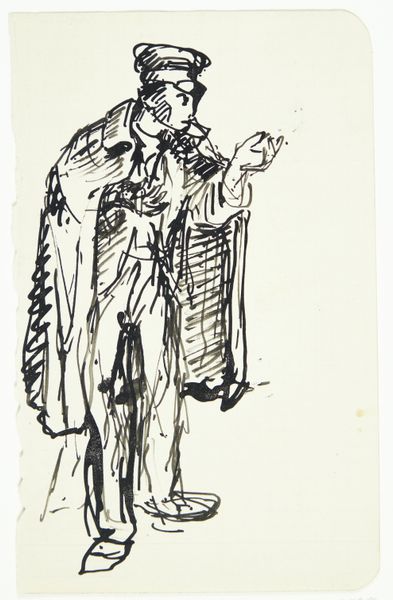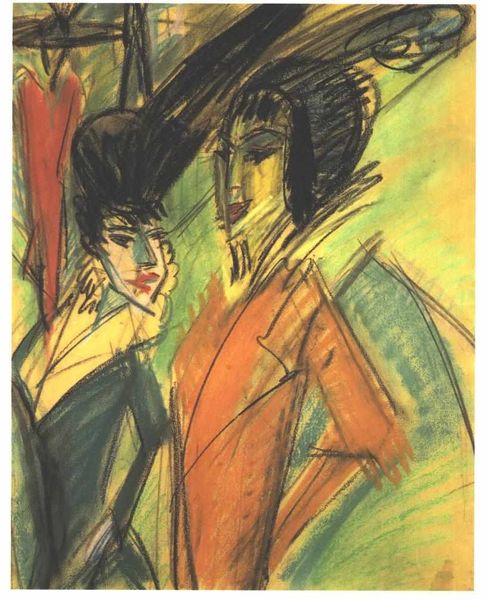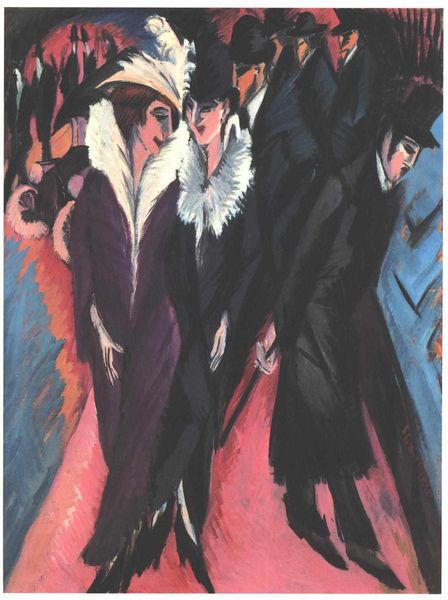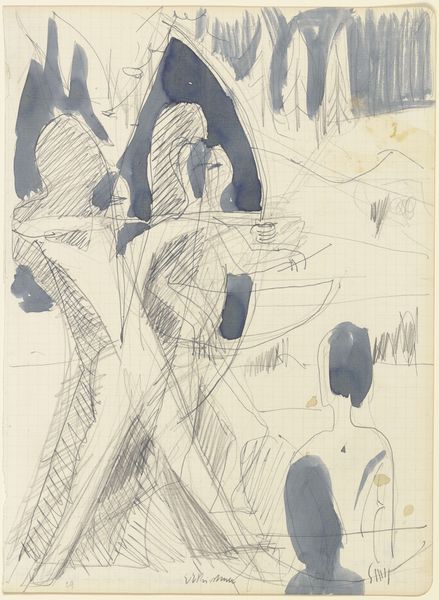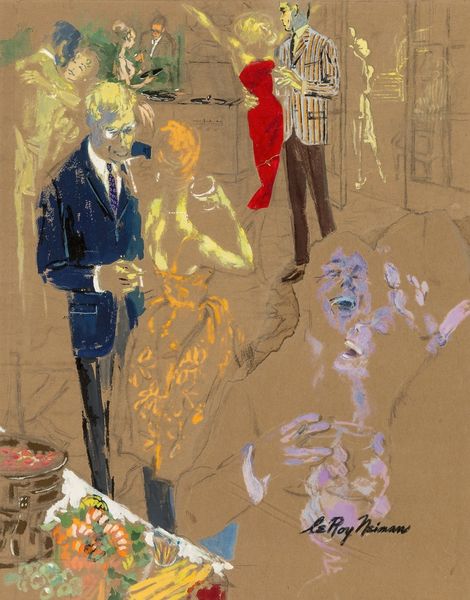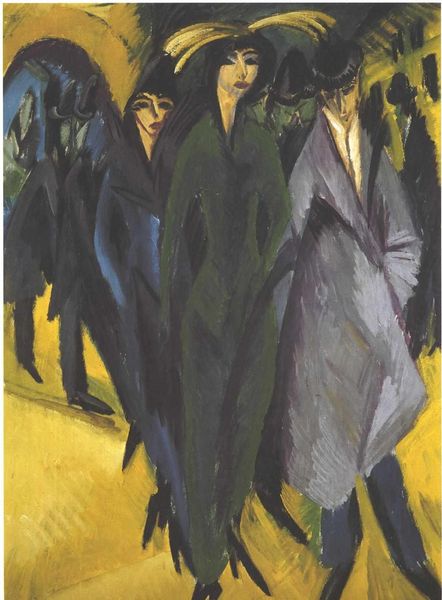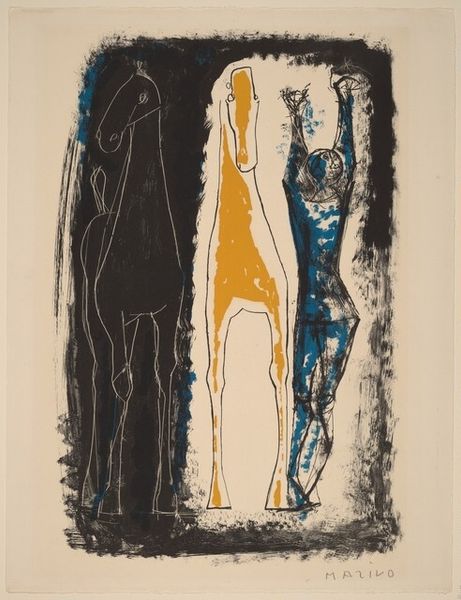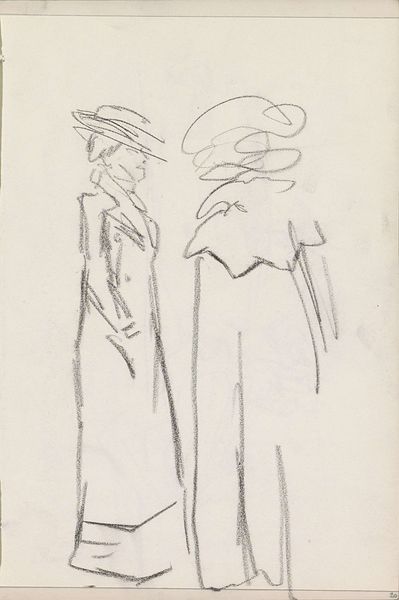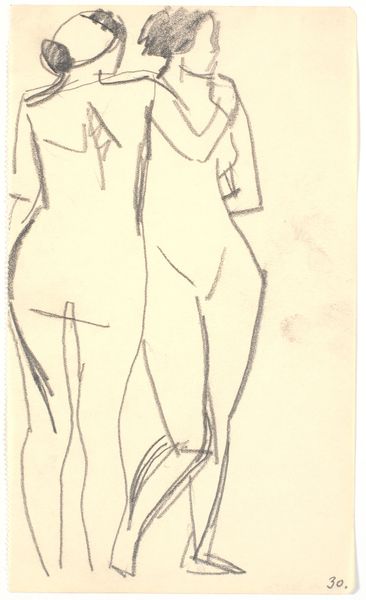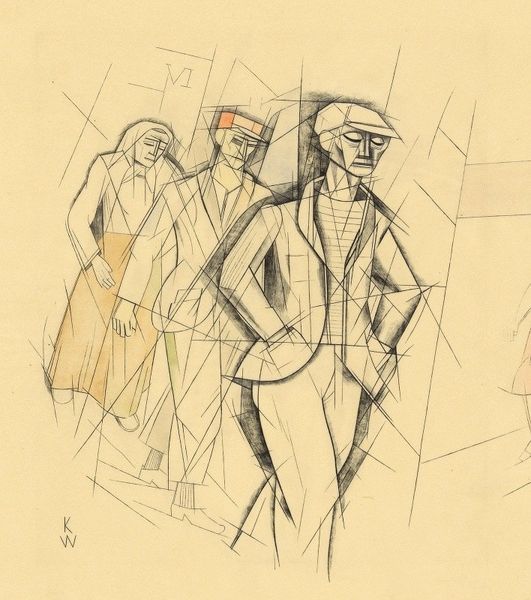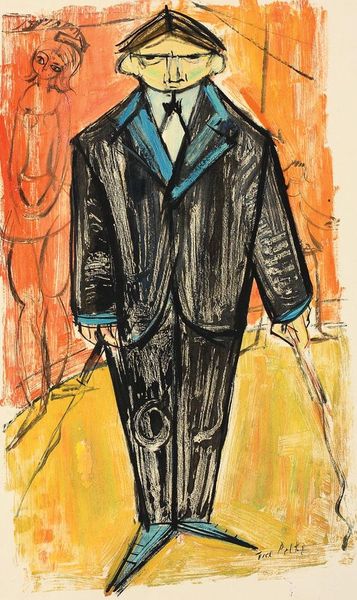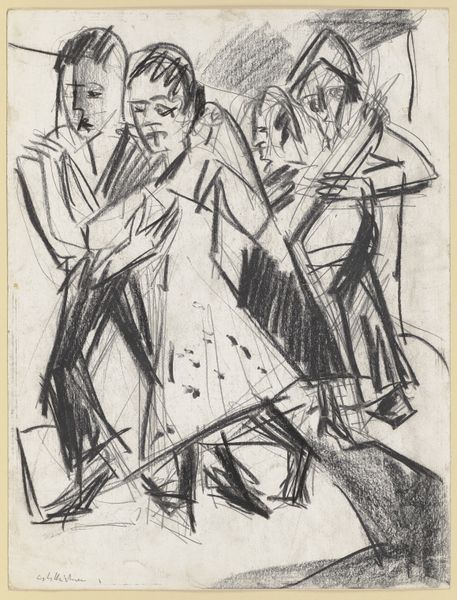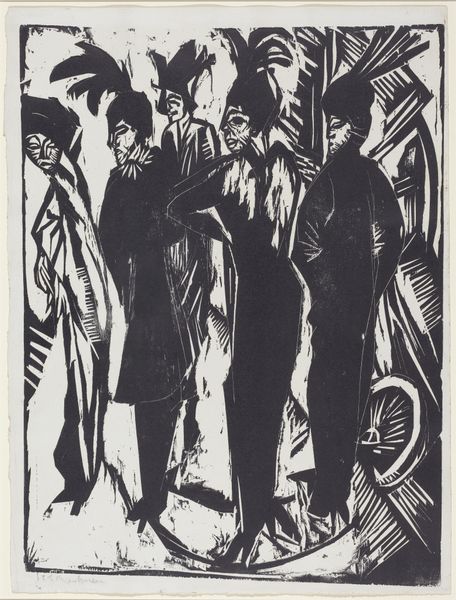
drawing, graphite, pastel
#
portrait
#
17_20th-century
#
drawing
#
woman
#
german-expressionism
#
german
#
linocut print
#
expressionism
#
graphite
#
cityscape
#
pastel
Copyright: Public Domain
Ernst Ludwig Kirchner captured this street scene in Berlin using chalks and charcoal. It presents a snapshot of urban life in Germany during the early 20th century. The artist was a member of the Expressionist group Die Brücke, who sought to depict the raw emotions and psychological states of modern life. Here, the angular figures, harsh lines, and discordant colors evoke a sense of unease and alienation, and the rendering is of a modern city marked by rapid industrialization and social change. The rigid poses and exaggerated features of the figures further enhance this sense of alienation. To fully understand Kirchner's Berlin Street Scene, we need to examine the social, economic, and political conditions of early 20th-century Germany. The city was a hotbed of artistic experimentation and political ferment. By consulting historical documents, archival materials, and contemporary accounts, we can gain valuable insights into the cultural milieu that shaped Kirchner's artistic vision.
Comments
stadelmuseum about 2 years ago
⋮
When the Brücke member Ernst Ludwig Kirchner moved from Dresden to Berlin in 1911, life in the modern metropolis became one of the central topics in his works. Today they rank among the highlights of his artistic oeuvre. This pastel of a Berlin street scene belongs in the conceptual context of many of the paintings, drawings and prints in which Kirchner took as his subject the bustle on the streets and squares of the capital and in each case made use of the special features of the technique in question.The foreground of the scene is dominated by an arrangement of three elongated figures, who take up the entire height of the picture surface. With dynamic, rapid strokes, the artist has characterised a man dressed in a coat and hat and two fashionably dressed women. The women's outfits, the feather hats, the costume with the overlarge collar, and the high-heeled shoes are immediately eye-catching. The way they are posing and their mask-like faces - highlighted in a garish, pale blue and alertly registering their surroundings - make it clear that they are prostitutes. The scene derives its aggressive character from the jagged forms ending in acute angles and the dominant colours: black, the turquoise of the costume, the purple of the punter's hat and trousers, but above all from the sulphur-yellow light that surrounds them. A suggestive aspect is provided behind the right-hand figure by the phalanx of extended male legs running parallel to each other as they descend into the depths of an otherwise undefined space - a feature that recurs in the painting 'Friedrichstraße' (1914, Staatsgalerie Stuttgart). The energetically charged tension is, however, immediately converted into the powerful execution and intensity of the pastel colours in the drawing. The artist's gaze at the challenging eroticism of big-city civilisation is considerably different from the natural sensuousness of the works he created in Dresden and on Fehmarn. A drawing such as his 'Berlin Street Scene' colours our impression of the mood in the German metropolis on the eve of the First World War.The Brücke artists' association disbanded in 1913 and Kirchner's involvement with the magazine 'Der Sturm' would take him to the centre of the Expressionist movement. This pastel belonged at one time to the collector Carl Hagemann, who maintained a friendly relationship with the artist until he died. It is thanks to the "Bequest of Dr. Carl Hagemann" that the Collection of Prints and Drawings has in its possession one of the most important collections of Expressionist art.
Join the conversation
Join millions of artists and users on Artera today and experience the ultimate creative platform.
